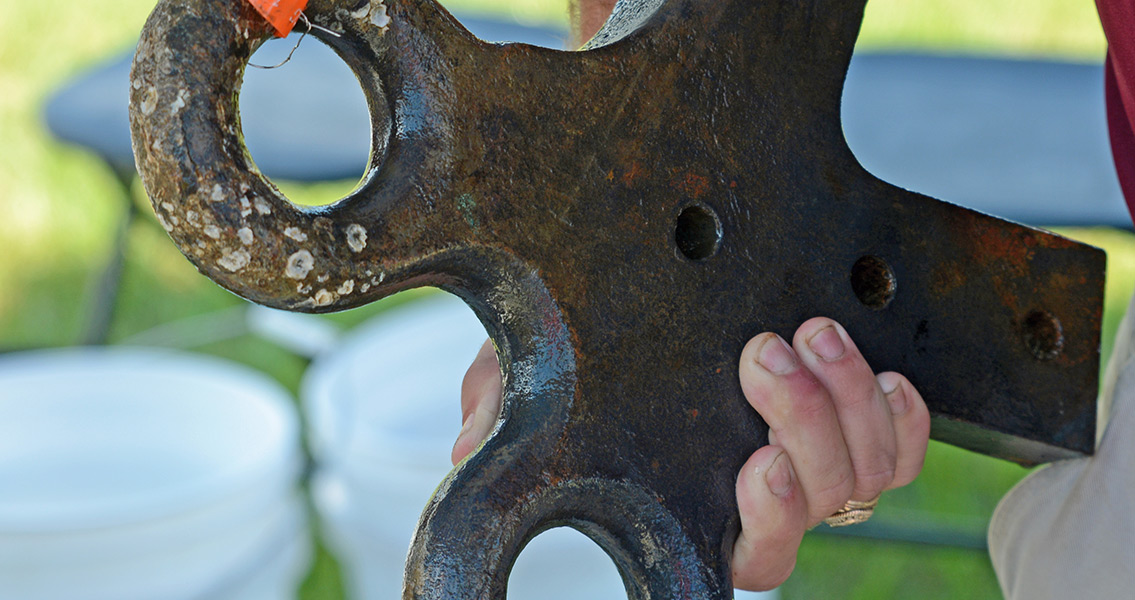<![CDATA[Of the more than 30,000 artifacts recovered from the wreckage of the CSS Georgia, over 16,000 (135 tons) have been returned to their watery grave. The items were loaded into 10 shipping containers which were put back in the Savannah river, and then covered with mud to deter treasure hunters. The CSS Georgia was among the first armored warships to be designed during the Civil War. It had a massive frame, with strips of railroad iron over three layers of timber. The Georgia was so bulky its own engines weren’t able to move it against the currents of the Savannah River, so the Confederates anchored it at Old Fort Jackson and used it as a floating gun battery. The Georgia was sunk by its own crew, without ever having fired a shot, to prevent it from being captured when Gen. Sherman along with his Union troops captured Savannah in December of 1864. During the summer of 2015, following 150 years lying on the bottom of the Savannah River, the CSS Georgia was raised to the surface one 5-ton piece at a time as part of a $703 million project to deepen the Savannah harbor to accommodate cargo ships. Due to sonar images taken of the murky riverbed, researchers anticipated finding large pieces of the ship's armor, pieces of its engine and several cannons. What they didn’t anticipate was that more than half of the salvaged items consisted of much more mundane artifacts: leather boots, nuts, bolts, sword hilts, and even one stray earring. Returning redundant or damaged artifacts to the Savannah River was always the plan according to Julie Morgan, the project’s supervising archaeologist with the Army Corps of Engineers. Although returning over half of the artifacts to the bottom of the river seems foolhardy, according to Jim Jobling, the project manager for the Conservation Research Laboratory at Texas A&M University which has been tasked with cleaning, preserving and cataloging the Civil War artifacts salvaged from the Georgia, all of the salvaged items were picked through and anything considered to be unique or which contributed to the historical understanding of the Civil War was kept. As it is, they kept over 13,000 (142 tons) artifacts which will keep the lab busy for at least a decade. The containers were sunk in a part of the river which is outside of the busy Savannah River shipping channel. The artifacts and their location have been documented for retrieval if needed in the future. Furthermore, storing them back in water will also help in preserving them, while continued exposure to the air would have sped up their rate of deterioration. The experts have expressed very little, if any concern about treasure hunters attempting to retrieve any of the artifacts; even the experienced Navy divers who assisted with raising the wreckage struggled with strong tides and exceedingly low visibility, which combined to limit the productive diving time to approximately three hours a day. Image courtesy of Wikimedia Commons user: Bubba73 (Jud McCranie) ]]>
135 Tons of Treasure Returned to the Savannah River
